Great Design Plant: Penstemon Parryi
The pink spikes of Parry’s penstemon (Penstemon parryi) may look as if they belong in a cottage garden, but in reality this perennial is a desert native that easily handles hot, intense sun with little water. This Southwestern native is easy to start from seed and can be treated as an annual wildflower or as a perennial when watered throughout the warm months of the year. Choose this drought-tolerant penstemon for sunny areas in low-elevation gardens (under 5,000 feet).
This penstemon’s most striking features are its flowering spikes, which bring a welcome touch of pink to the garden in late winter on into spring, and are sure to attract the hummingbirds in the neighborhood. Parry’s penstemon needs very little and thrives on neglect — just provide water spring through fall and watch the magic begin in late winter.
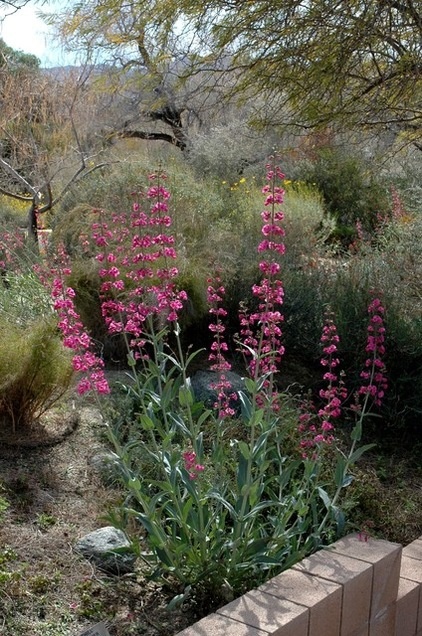
Botanical name: Penstemon parryi
Common names: Parry’s penstemon, Parry’s beardtongue
Origin: Native to the low deserts of central Arizona and Sonora, Mexico, along washes and rocky slopes
Where it will grow: Hardy to 15 degrees Fahrenheit (USDA zone 8; find your zone)
Water requirement: Able to survive on natural rainfall through the winter; water twice a month in spring and fall and weekly in summer
Light requirement: Full sun is best but can tolerate filtered shade
Mature size: 2 to 3 feet tall (when in flower) and 1 foot to 2 feet wide
Benefits and tolerances: Drought tolerant; attracts hummingbirds; suitable for wildflower gardens
When to plant: Fall through spring from seed or transplants
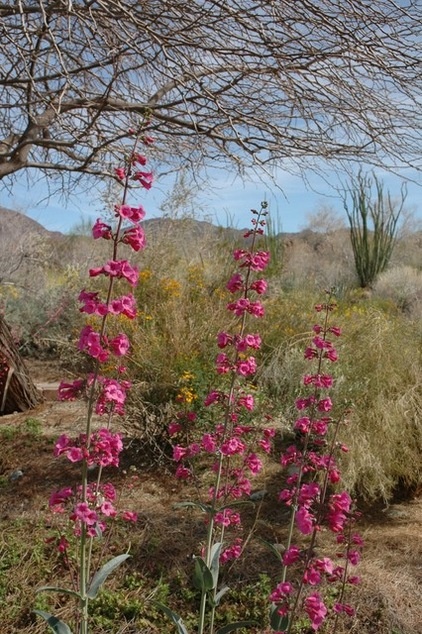
Distinguishing traits. The base of Parry’s penstemon is made up of a rosette of narrow, blue-gray leaves that are 4 inches long and 1 inch wide. When not in flower, Parry’s penstemon, like other penstemon species, is rather unremarkable and blends into the surrounding landscape.
Impatient for spring, it begins rapidly growing in late winter; the spikes begin to grow and flower buds appear, giving a hint of the pink show to follow.
The flowers of Parry’s penstemon can vary from light pink to dark magenta. The beautiful flowers delight not only the people who view them, but also the hummingbirds who feed on them. Parry’s penstemon begins blooming in mid-February and continues on into April. Pruning the flowering spikes just as they begin to fade will stimulate a new flush of blooms, although the plant will be smaller.
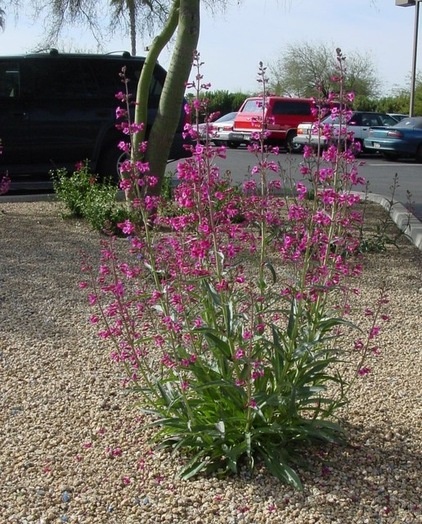
When treated as an annual, Parry’s penstemon seldom needs supplemental water and can be left to go to seed, producing new plants for the next season.
For those who want to grow this penstemon as a perennial, supplemental water is needed for it to survive spring through fall. It’s important not to overwater, which can cause the plant to flop over when in flower. Too much water is also a frequent cause of root rot with this penstemon. Providing water twice a month in spring and fall with weekly watering in the summer is enough to keep it alive throughout the year.
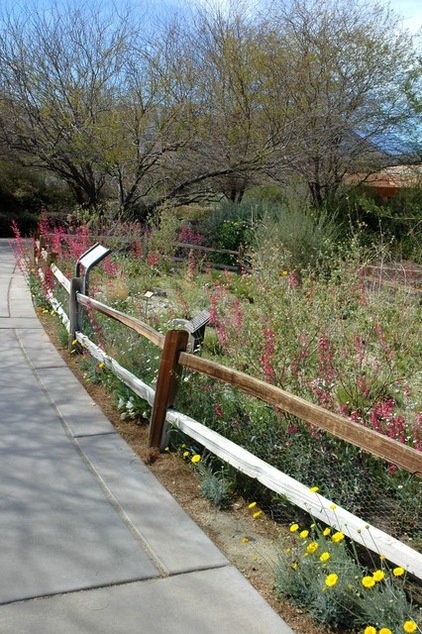
How to use it. Parry’s penstemon is best suited for informal planting areas and looks great in a bed filled with annual wildflower favorites such as California blue bells (Phacelia campanularia) and California poppy (Eschscholzia californica).
In a more permanent spot in your garden, plant it alongside other flowering perennials, such as angelita daisy (Tetraneuris acaulis), blackfoot daisy (Melampodium leucanthum), desert marigold (Baileya multiradiata) and desert primrose (Oenothera deltoides).
This versatile perennial also looks great when planted near cacti and succulents like desert spoon (Dasylirion wheeleri), golden barrel (Echinocactus grusonii) and Santa Rita prickly pear (Opuntia santa-rita).
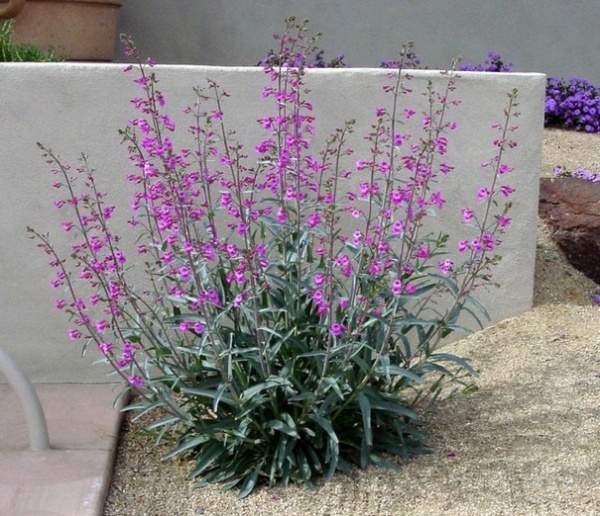
Planting notes. Plant it in full sun or filtered shade. Well-draining soil is a must, so it’s best to amend heavy clay soils with compost before planting. No fertilizer is needed.
Prune spent flowering spikes in late spring. Spread the seed in wildflower garden areas or save some to plant in another area of your garden. Parry’s penstemon is also available as a transplant in 1-gallon and 3-gallon sizes.
Learn more about gardening with native plants in your area












